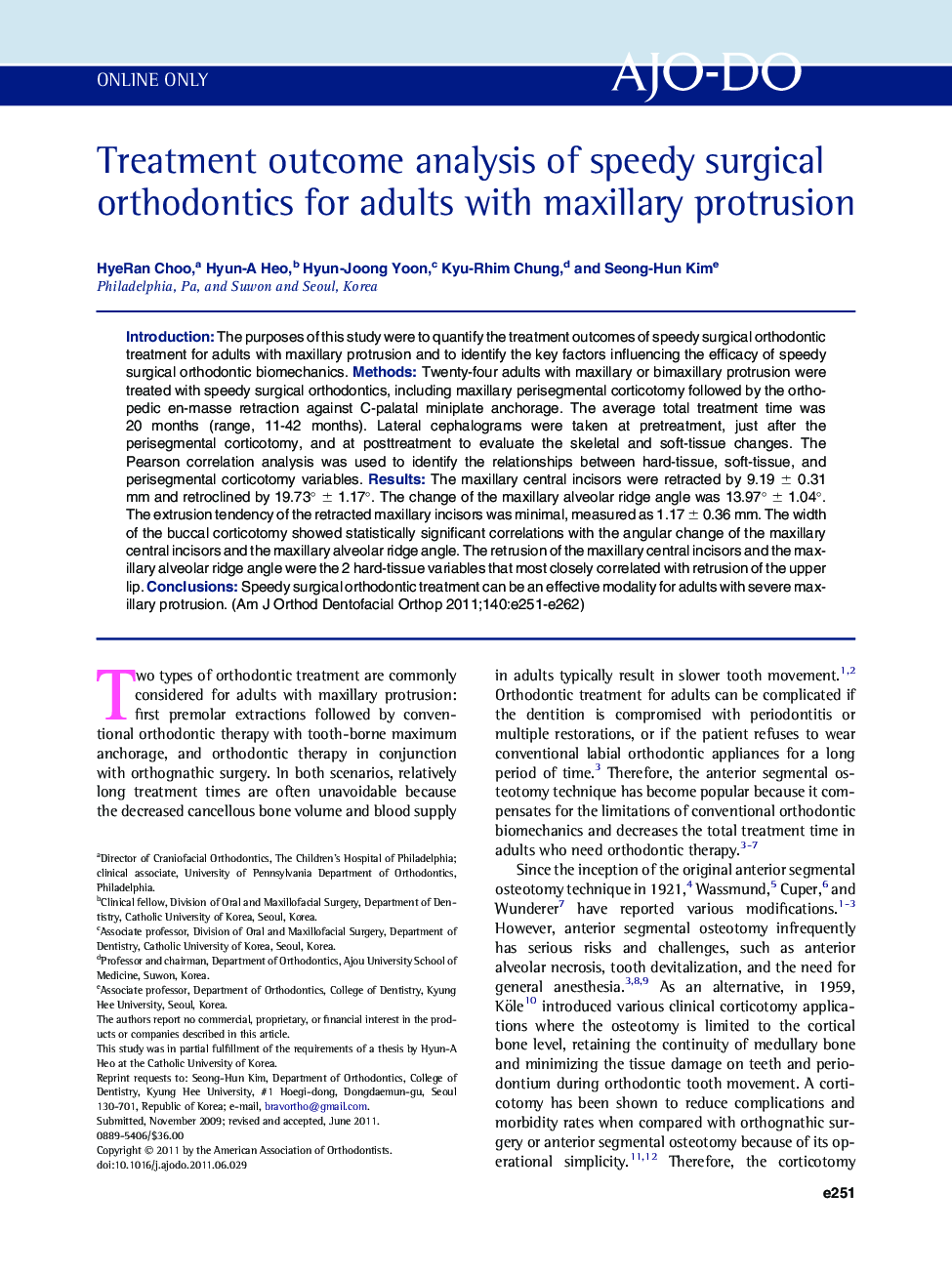| Article ID | Journal | Published Year | Pages | File Type |
|---|---|---|---|---|
| 3117159 | American Journal of Orthodontics and Dentofacial Orthopedics | 2011 | 12 Pages |
IntroductionThe purposes of this study were to quantify the treatment outcomes of speedy surgical orthodontic treatment for adults with maxillary protrusion and to identify the key factors influencing the efficacy of speedy surgical orthodontic biomechanics.MethodsTwenty-four adults with maxillary or bimaxillary protrusion were treated with speedy surgical orthodontics, including maxillary perisegmental corticotomy followed by the orthopedic en-masse retraction against C-palatal miniplate anchorage. The average total treatment time was 20 months (range, 11-42 months). Lateral cephalograms were taken at pretreatment, just after the perisegmental corticotomy, and at posttreatment to evaluate the skeletal and soft-tissue changes. The Pearson correlation analysis was used to identify the relationships between hard-tissue, soft-tissue, and perisegmental corticotomy variables.ResultsThe maxillary central incisors were retracted by 9.19 ± 0.31 mm and retroclined by 19.73° ± 1.17°. The change of the maxillary alveolar ridge angle was 13.97° ± 1.04°. The extrusion tendency of the retracted maxillary incisors was minimal, measured as 1.17 ± 0.36 mm. The width of the buccal corticotomy showed statistically significant correlations with the angular change of the maxillary central incisors and the maxillary alveolar ridge angle. The retrusion of the maxillary central incisors and the maxillary alveolar ridge angle were the 2 hard-tissue variables that most closely correlated with retrusion of the upper lip.ConclusionsSpeedy surgical orthodontic treatment can be an effective modality for adults with severe maxillary protrusion.
